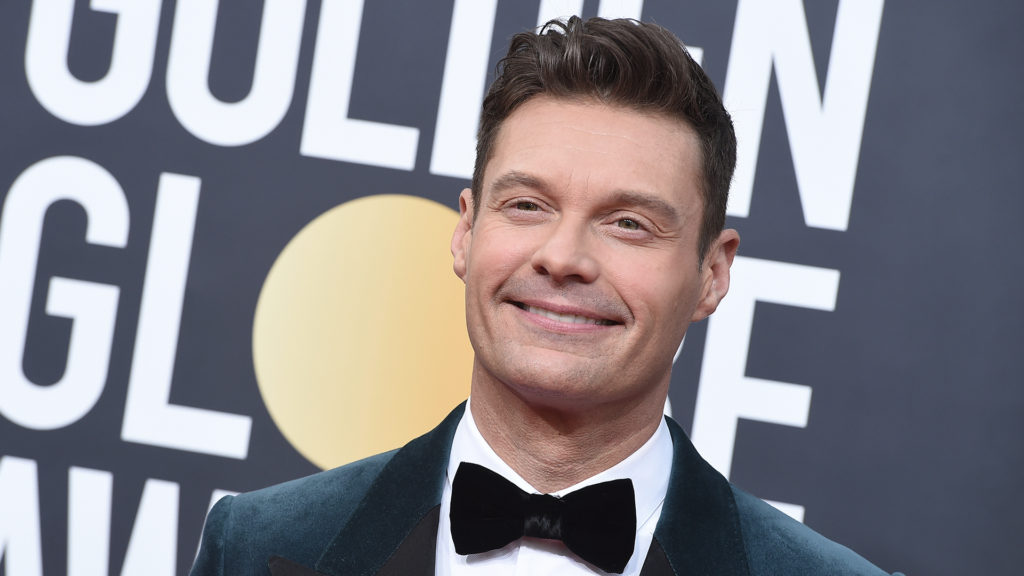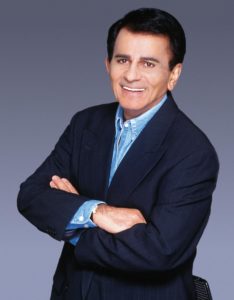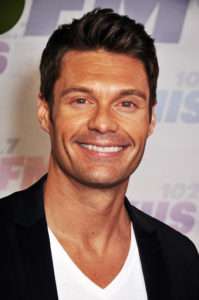
I am an unabashed fan of the historic aspect of broadcasting, of the nostalgia for those that came before and built their shows during the infancy of media. Shows that would grow to become the background soundtrack of our lives. Radio or television. Sports, news, or entertainment. Daytime talk shows, nighttime talk shows. Announcers, deejays, reporters, journalists. People who showed up to work every week, every year for seemingly our entire lives. People that became our lifelong virtual companions, sharing in the important moments of the days and years as they passed by. I’ve always been a fan of this nostalgia. Johnny Carson and Tom Snyder in late-night television, leading to the more recent past of Jay Leno and David Letterman. In sports, there are legendary local announcers such as Ernie Harwell, Bob Uecker, or Vin Scully. National sports announcers such as Pat Summerall and John Madden. Of course, nearly every broadcaster in the California Angels broadcast booth scene within the film, The Naked Gun, fits the description of being a legendary broadcaster of my youth. Every city probably has their own legendary morning radio hosts. In Detroit, the two biggest names when I was growing up were J.P. McCarthy and Dick Purtan.
In terms of national radio, I grew up listening to American Top 40. I can remember delivering newspapers on Sunday morning, listening to native Detroiter, Casey Kasem, count down the top 40 hits on his nationally-syndicated program. During this timeframe of my youth, Casey Kasem was unceremoniously shown to the door, and replaced with the younger and hipper Shadoe Stevens. Casey would create a rival program, Casey’s Top 40. In Detroit, American Top 40, now with Shadoe Stevens, continued to air on 96.3, while Casey’s Top 40 would air on 99.5. I would deliver my Sunday papers, but now flip between the two programs, taking note of how the two countdowns differed. Wondering why Paula Abdul was #3 on this countdown, but #1 on the other. I actually thought Shadoe Stevens did a pretty good job, and rather enjoyed his show as well, but it’s tough replacing a legend. Much like Conan O’Brien replacing Jay Leno on The Tonight Show did not work out quite as well as NBC had hoped, the same sort of thing happened with American Top 40. Eventually, after many years, the two programs came back together, with Casey returning as host of American Top 40.
American Top 40 began on July 4th, 1970, created by Casey Kasem and producer Don Bustany. Originally airing on just a handful of radio stations, not even reaching double digits in quantity. Of course, this was an era long before the internet, and they would distribute the program by sending out vinyl records to the radio stations each week, which contained the entirety of the program. The first number one song was Three Dog Night’s Mama Told Me Not To Come.

The show grew to become part of that American soundtrack of life, complete with those Casey Kasem long-distance dedications. Gaining stations, gaining status, even having a short-lived TV show during the 1980’s counting down music videos. Eventually Casey Kasem decided to call it quits, walking away from his hosting duties in 2004, handing the reins over to Ryan Seacrest. The final number one for Casey, and the first number one for Ryan, was Hey Ya by Outkast.
I first became aware of Ryan Seacrest, probably the same way as most of America did, as host of the juggernaut television show, American Idol. I did not watch the first season, when he cohosted with Brian Dunkleman, but soon he was flying solo in season 2. Near the beginning of season 2, a friend of mine had grabbed the remote control, turned the show on, asking me, “have you ever watched this show, American Idol?”. I replied with a no, and asked about the show.
What is it about?
“It’s a talent show.”
Who is this British judge guy?
“That’s Simon, he’s mean.”
Who is the host?
She then said about the host, “I don’t know, he’s some idiot. You should have seen it last year, there were two of them as hosts. Tweedle-Dum and Tweedle-Dumber.”
Slowly, Ryan Seacrest seemed to take over the hosting of everything. At first, I can’t say I was necessarily a fan, although I can’t say I was not a fan either. He was just there, all the time. Award shows, red carpets, game shows, radio, TV, talk shows. Hosting everything on TV, live, all the time, everywhere, never making a mistake. Like seriously, ever. He never seems to fumble his words. An ability that I can only assume was honed over thousands of hours of being on the radio, first in Georgia, then eventually in afternoon and morning drive in Los Angeles. Suddenly, I realized that maybe he wasn’t a bland, vanilla host as was my initial reaction, but that he actually was the type of person I claimed I always wanted a host to be. A professional, never making any errors, and just getting out of the way and letting the show be the star.
Seacrest rang in New Year’s Eve 2004, from Times Square, with a Fox special. The following year, he switched over to ABC and joined the gold standard of New Year’s Eve broadcasts, Dick Clark’s New Year’s Rocking Eve. I don’t pretend to know anything about contract issues or any behind the scenes reason for his network switch. I imagine, if he wanted to, Seacrest could have easily chosen to stay with Fox and create a new New Year’s Eve tradition. But looking back now, I doubt it was a happenstance that he switched over to ABC. Having heard him be interviewed and discuss things through the years, he is somebody that has an almost religious fervor for broadcast nostalgia and history. Much more so than even I, your humble scribe. I firmly believe that Seacrest wanted to inherit the legacy of Dick Clark’s New Year’s Rocking Eve, not create his own Fox version of the same thing. The fact that even now, years later, he still keeps Dick Clark’s name in the title is a testament to his awareness and appreciation for the legends that came before him.
Furthermore, listening to American Top 40 this year, it’s 50th Anniversary year, Seacrest peppers each show with plentiful amounts of tributes and flashbacks to Casey Kasem moments. He also played some clips of previous guest hosts as well. (Hey Ryan, a quick request, feel free to play at least one Shadoe Stevens clip sometime this year!)

Additionally, Seacrest now is cohost of the Live program on ABC with Kelly Ripa. I still want to call it Live with Regis. I think everyone does. It still feels like Regis’ show, it’s just been handed down to a few additional hosts as the years have gone by. Again, I don’t think it is happenstance that Seacrest would choose to add this particular show to his already hectic hosting schedule and move across the country to host it. This was not a daytime startup show (which Seacrest already tried once and failed with in 2004, with On-Air with Ryan Seacrest airing on mostly Fox stations), but this was a legacy show. This was Regis’ show, another chance to inherit the duties of a broadcast legend. Casey Kasem, Dick Clark, and now Regis Philbin.
And that is how I came to admire and enjoy the talents of Ryan Seacrest. He’s really good at what he does, exceptionally so. And in this day and age when it seems impossible to get decent customer service, I have grown to genuinely appreciate anyone that is good at their craft, whatever that craft may be. I don’t pretend to know him, but Seacrest comes across as a generally hardworking and nice guy. Then there is the fact that he loves the broadcasters that came before him. The history, the nostalgia. That is my kryptonite, that is what won me over.
Radio and television are not what they used to be. Their influence and profitability are waning. Streaming and internet, binge-viewing, that is the new normal. Still, the number of eyeballs that watch TV are shockingly large in comparison to most internet-based things. For every Joe Rogan podcast, or viral video garnering millions of views, there are millions of videos with only hundreds of views. Yet, if NBC puts a show on at 1:30AM, it still manages to get one million viewers. One million unique viewers. Every night. Of course, there are millions more viewers during the daytime hours. There still is a community viewing experience with television, something that its viewers share together. The internet causes everyone to retreat back to their own fiefdom of personal interests.
TV’s influence will likely continue to wane, and in 10-20 years, who knows what it will be like, if it will even still exist. For now though, still getting millions of viewers and listeners, every day, every week, every year is TV and Radio. And who is there, hosting the late-night Olympics coverage, hosting a Disney music sing-along, hosting everything? The legends of the past have given way to the new torchbearer, Ryan Seacrest, the host of our modern American TV life. And that’s okay, because there is nobody better at it, and I doubt there is anyone that could appreciate the role more.
– MTR
You can follow MTR on Twitter and let him know what you think.